| Pages:
1
2 |
MrHomeScientist
International Hazard
    
Posts: 1806
Registered: 24-10-2010
Location: Flerovium
Member Is Offline
Mood: No Mood
|
|
Those are spectacular colors! How did you make them? Do you have a procedure posted in another thread? I'd like to try this myself.
|
|
|
vano
National Hazard
   
Posts: 661
Registered: 22-3-2019
Location: Georgia
Member Is Offline
|
|
Quote: Originally posted by vano  |
also, cobalt selenite precipitation is a little bit hard than Cu and Ni selenites. I dissolved sodium selenite and cobalt chloride hydrates in hot
water. then I mixed the solution but nothing precipitated, then I poured the mixture into another beaker and there was cold water. then it
precipitated instantly. From my experience, you cant make the compound with a high yield just dissolve compounds in hot or cold water and mix them.
|
Hi. this is the procedure.
|
|
|
vano
National Hazard
   
Posts: 661
Registered: 22-3-2019
Location: Georgia
Member Is Offline
|
|
Selenium dioxide.
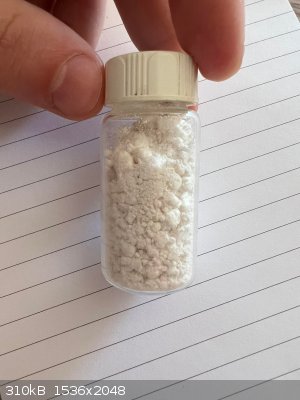
|
|
|
vano
National Hazard
   
Posts: 661
Registered: 22-3-2019
Location: Georgia
Member Is Offline
|
|
Caesium hexabromoselenite.
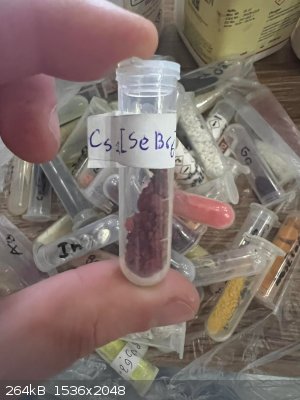
|
|
|
vano
National Hazard
   
Posts: 661
Registered: 22-3-2019
Location: Georgia
Member Is Offline
|
|
TITANIUM SELENITE(?)
We know that many compounds of Ti(III) are unstable, for example hydroxide, tungstate... but yesterday i mix some titanium trichloride and sodium
selenite solutions, it is logical to think that titanium can reduce selenite to red selenium in the solution. but when I tried this reaction in a test
tube it wasn't red allotropy.
i made more, then i filtered it and put on petri dish, i can dry it with other methods, but i use sunlight, because if there was any red selenium or
it was red selenium precipitate it must turn black color. onced i tryed to dry red alotropy under sunlight and it takes 30 minute to be black.
unfortunately i couldn't find any info about trivalent selenite.
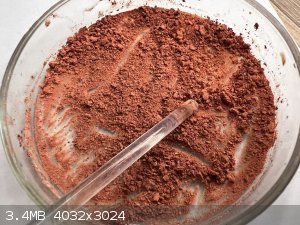
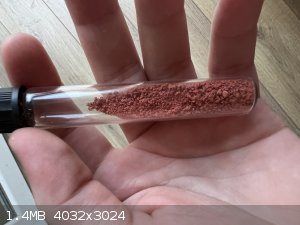
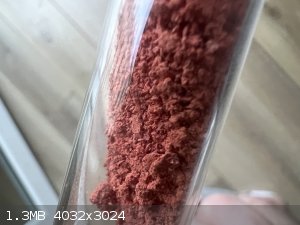
|
|
|
woelen
Super Administrator
        
Posts: 8012
Registered: 20-8-2005
Location: Netherlands
Member Is Offline
Mood: interested
|
|
Maybe the reduction by titanium(III) is so vigorous, that the selenium is reduced all the way down to selenide. That would lead to TiSe2. I don't know
the properties of that.
|
|
|
vano
National Hazard
   
Posts: 661
Registered: 22-3-2019
Location: Georgia
Member Is Offline
|
|
I'm not sure 100% about what it is, These are just my assumptions. bad thing is that I couldn't find any info. so ill put all of my powder in nitric
acid and make some titanium dioxide hydrate. I have TiO2 but you know it's very inert, because of its calcinated temperature. and ill make some Ti(IV)
complexes, just more logical valency to work with.
|
|
|
clearly_not_atara
International Hazard
    
Posts: 2787
Registered: 3-11-2013
Member Is Offline
Mood: Big
|
|
Selenides of titanium may be alloy-like, TiSex, rather than salt-like. Selenium is not terribly electronegative. TiS2 is a conductor IIRC.
|
|
|
vano
National Hazard
   
Posts: 661
Registered: 22-3-2019
Location: Georgia
Member Is Offline
|
|
yes, many possible formulas, selenide, polyselenide, selenite, and different valency of titanium... unfortunately I can't make an analysis now. but
worth to try I think, but I don't recommend it for forum members. I just hate when I have chemical and I don't know exactly what it is. thanks,
everyone for your ideas!
|
|
|
| Pages:
1
2 |